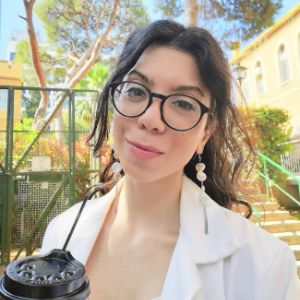Title : Novel connective tissue growth factor (CTGF)-loaded alginate and alginate sulfate/polycaprolactone nanoparticles with promising wound healing activity
Abstract:
Diabetes is a metabolic disorder characterized by hyperglycemia and affecting more than 460 million people worldwide. Uncontrolled diabetes can lead to secondary complications such as non-healing diabetic foot ulcers (DFUs) due to ischemia and peripheral neuropathy. Non-healing DFUs can worsen to gangrenes and may require partial or complete amputations, burdening the healthcare system with billions of dollars annually. DFUs are caused, in part, by the deficiency in growth factors (GFs) implicated in keratinocytes and fibroblasts proliferation, migration, and extracellular matrix deposition. The deficiency in GFs such as connective tissue growth factor (CTGF) and insulin-like growth factor (IGF-I) disrupts and delays efficient and complete wound healing. Herein, we report the development of novel double emulsion alginate (Alg) and alginate sulfate (AlgSulf2.0)/polycaprolactone (PCL) nanoparticles (NPs) for the controlled delivery of heparin-binding GFs, CTGF and IGF-I, to promote accelerated wound healing. The NPs physicochemical properties, GFs encapsulation efficiency and release profiles, cytocompatibility, and wound healing activity were assessed in immortalized human keratinocytes (HaCaT) and primary human skin fibroblasts (HSF). The synthesized NPs had a spherical morphology with an average hydrodynamic size of 214.46 ± 26.94 nm, a polydispersity index of 0.099 ± 0.054, and an average surface charge of -16.86 ± 5.52 mV. Both Alg and AlgSulf2.0/PCL NPs showed high encapsulation efficiency of IGF-I (99.74 % vs 99.62 %) with a low burst release (11.99 % vs 7.93 %) and a slow sustained release over 35 days in vitro (91.6 ± 9.89 % vs 75.57 ± 11.77 %). Moreover, treatment of HaCaT cells with Alg/PCL and AlgSulf2.0/PCL NPs did not show any toxicity when used at concentrations ≥ 50 µg/ml for 72 h, as evidenced by MTT assay. Finally, we found that HaCaT and HSF cells treated with Alg and AlgSulf2.0/PCL NPs loaded with 5 µg/ml CTGF respectively, induced rapid wound closure due to cell proliferation and migration. Double-emulsion polymeric NPs based on Alg or AlgSulf2.0 are promising novel drug delivery systems for the safe and controlled delivery of heparin-binding GFs. They can efficiently promote accelerated diabetic wound healing in human skin cells and fibroblasts and can be further applied for the delivery of other heparin-binding GFs for the treatment of various diseases.



